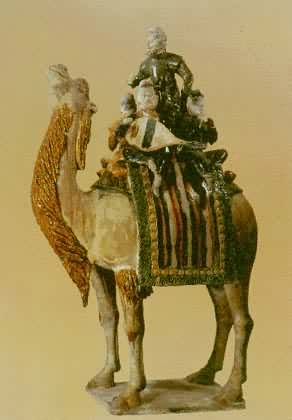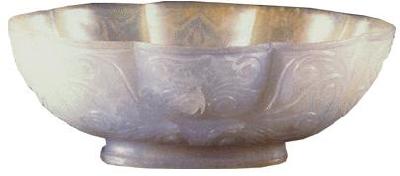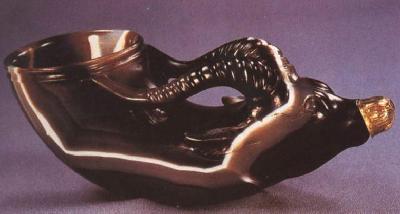 |
| Tang tricolor |
From its establishment
in 618 to its downfall in 907, the Tang Dynasty is the most prosperous dynasty
in Chinese history.
 |
| Jade article of the Tang Dynasty |
The
Tang can be divided into two periods: the early period and the late period, with
the eight-year An Lushan-Shi Siming Rebellion as its turning point. The early
period was a golden age, while the latter was a period of decline. After Emperor
Gaozu established the Tang Dynasty, Li Shimin, Emperor Taizong, finally unified
the whole of China in 10 years time. During his reign, Emperor Taizong invested
all of his efforts in consolidating his regime, making the Tang the most
prosperous in the history of feudal China. The period was known as Zhen Guan Zhi Zhi (the reigning
years of Zhen Guan) and was the world leader in politics, economy and
culture. The golden age -- a peaceful period called Kai Yuan Sheng Shi (the flourishing
age of Kaiyuan) -- continued until the reign of Emperor Xuanzong. In the
late years of Emperor Xuanzong's reign, the An Lushan-Shi Simin Rebellion
seriously hurt the Tang Empire, marking its decline.
 |
| Agate cup of the Tang Dynasty |
During
the early period, economic growth and political stability provided a favorable
environment for the development of culture, art and foreign relations. Tang
poetry was also the most remarkable in Chinese history. Achievements in other
fields were also exceptional.
The late-Tang period fell into a political
turmoil, with strife between the Niu Faction and Li Faction and eunuch monopoly.
Continuous peasant uprisings culminated in Huang Chao's uprising where Commander
Zhu Wen turned his back on Huang and joined the Tang side. Later, Zhu deposed
the Tang emperor and proclaimed himself emperor of the later Liang Dynasty,
which ushered in the period of the Five Dynasties and Ten
States.



